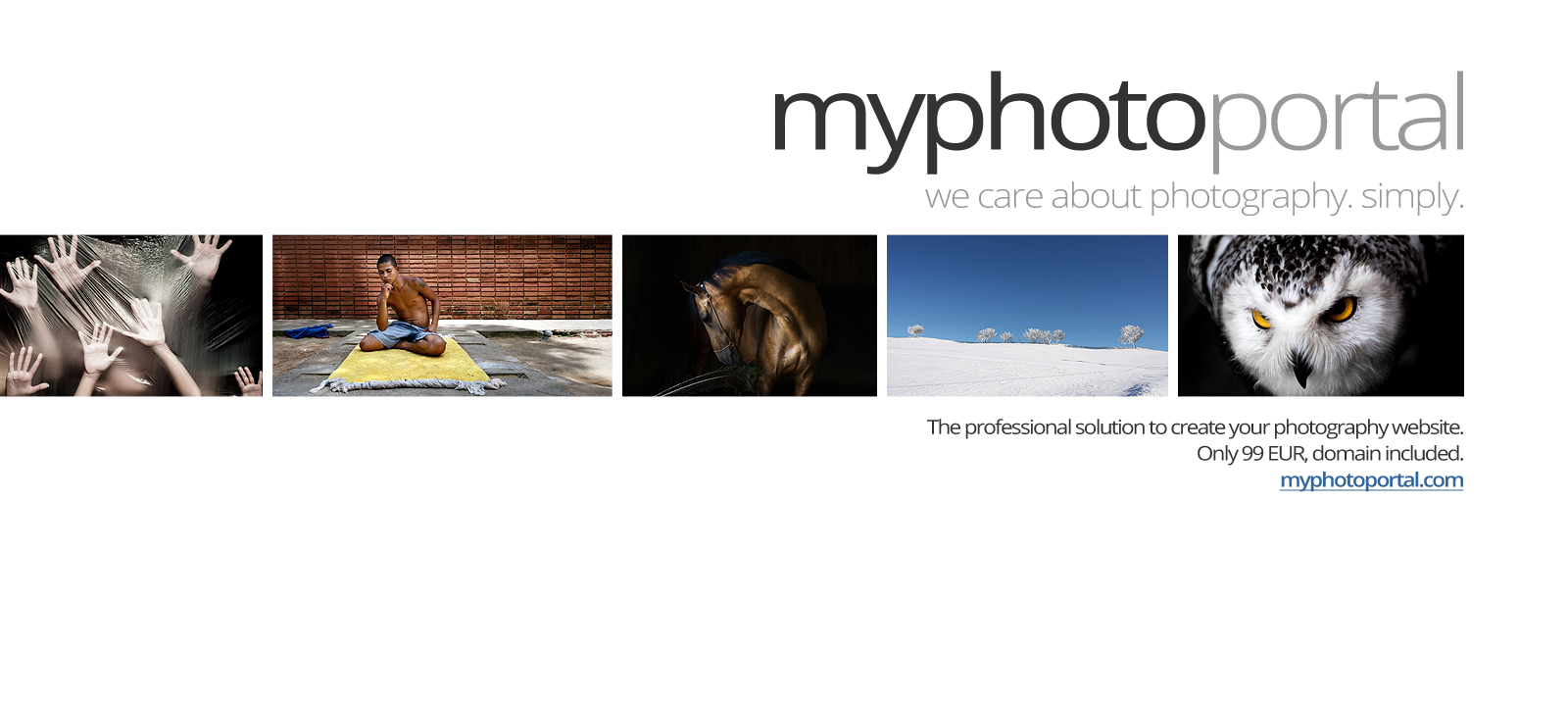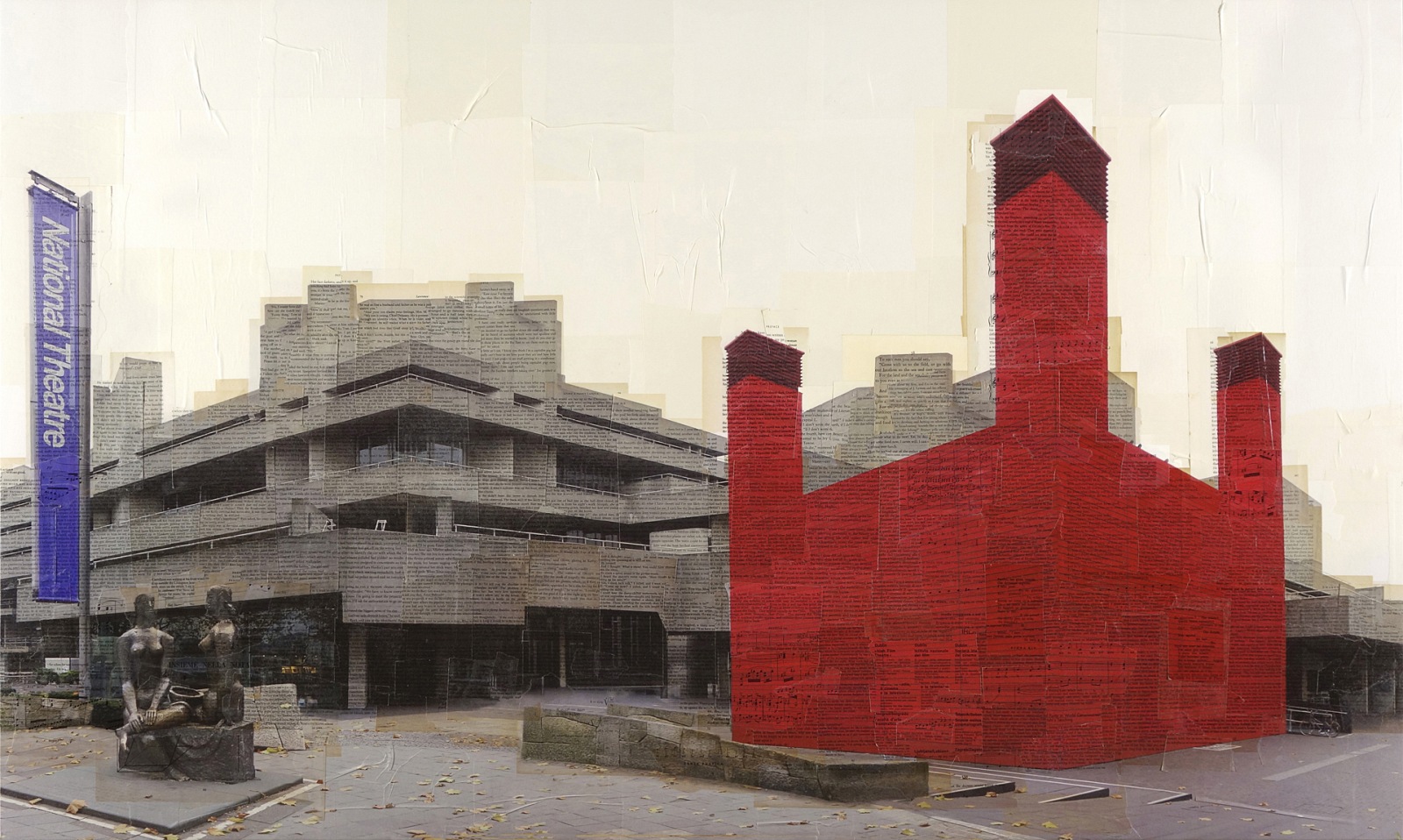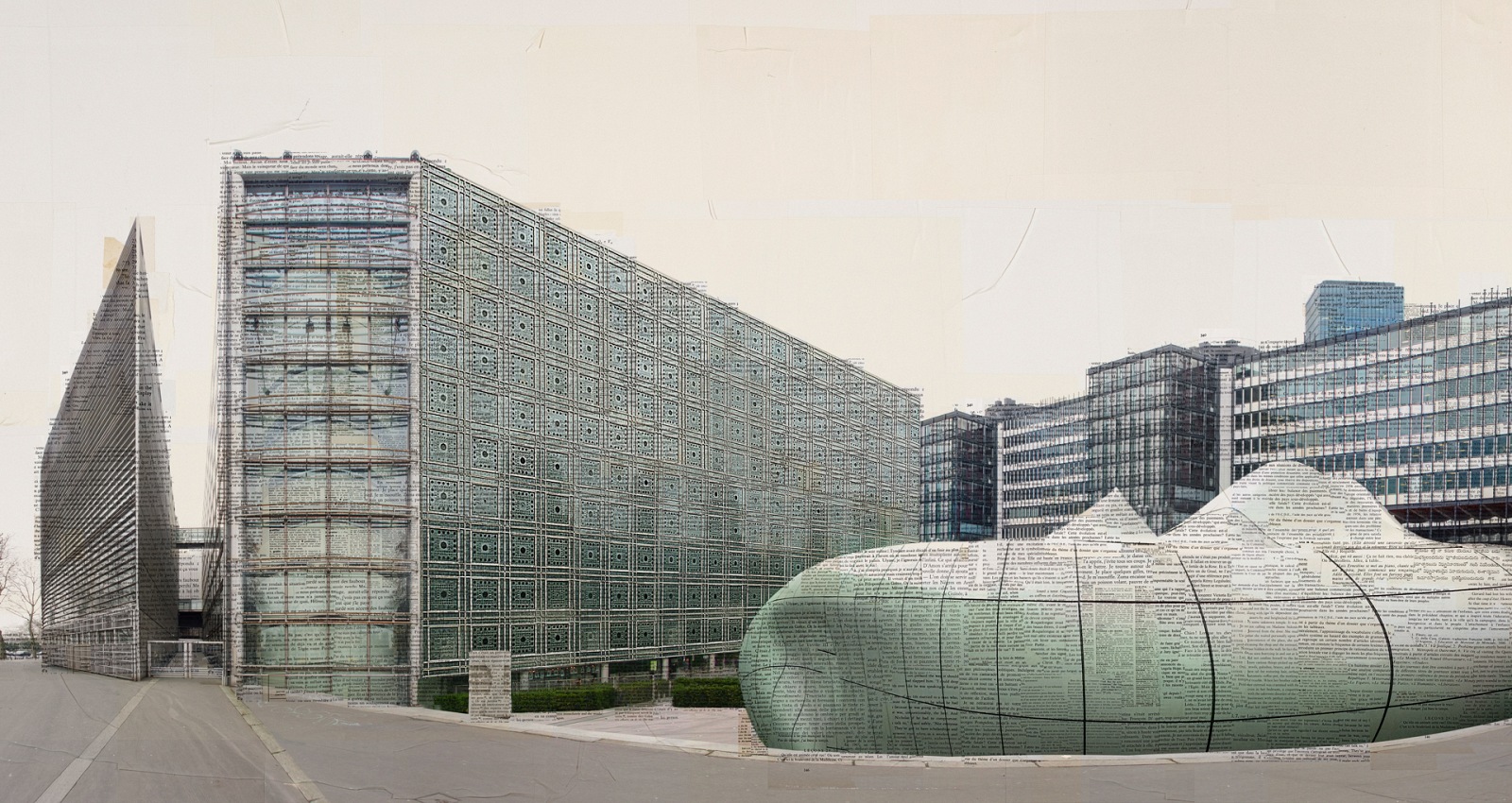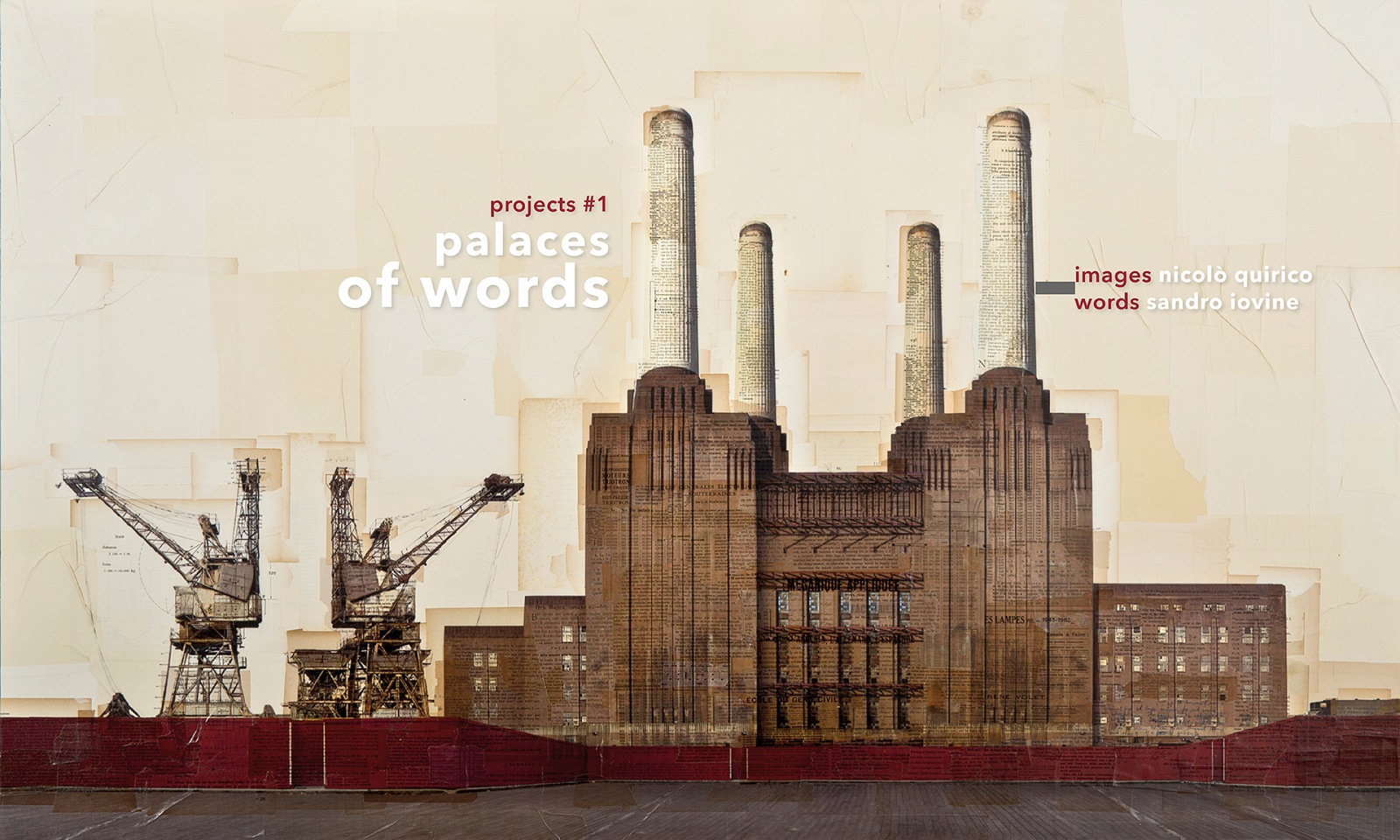 iNicolò Quirico, Memorie del lavoro (Memories of work).
iNicolò Quirico, Memorie del lavoro (Memories of work).
Photographic print on a collage of pages from vintage books, op. 1 of 3, 90x150x4cm, 2014, private collection.
© Nicolò Quirico.
«The gaze scans the streets as written pages: the city tells you everything you must think, makes you repeat its discourse, and while you believe you are visiting Tamara you are only recording the names with which it defines itself and all its parts»
Italo Calvino*
The old western town, especially in Roman culture, inherits and realises the entire corpus of traditions and religious beliefs of the culture, which it has expressed in the building. The town plans and its development were, in other words, a symbolic form organised in function for the quest of harmony with God’s laws. Our cities instead tend to present themselves as «a fabric of buildings intersected by roads or as a grid of streets bordered by buildings in outlying areas and forming a full mesh in the centre, based on the division of the areas and road traffic» (1).
In what way, then, can a symbolic reinterpretation today face the urban landscape in its highest form of human activity, obviously represented by the urban territory?
In the face of urban expansions that see the introduction of architectural elements whose functionality prevails over other considerations, cities tend to lose that identity that defined the historical era in time. There is then the proliferation of buildings, of ravenous boxes that are nourished by time (2), which creates in the sensitive artist the phenomenon of his era, the need to recover the value of their traditions, to find the identitary roots of their own social living.
This restoration of identity cannot then pass through, therefore, a symbolic operation that sees buildings and monuments built or, rather, rebuilt iconically. The raw material can no longer be made of brick and concrete. The buildings are to be erected on the word now, that in images become printed, direct expression of the culture that created it. |
|
The books, material of a housing culture, become symbolically (and de facto, with their pages, as regards the realisation of the work) the basis on which you lay the foundations to rewrite the perception of the city. Here, then, that the buildings are no longer just a mere jumble of architectural vanity, but the expression of a combination of knowledge that are structured in the course of Western civilisation history.
The figurative superstructure – in itself highly symbolic – is therefore based on the word, the value of which equally symbolic opens perhaps another glimmer of thought, beginning to break the barrier of conceit typical of human beings, often unaware of the transient nature of its artifacts.
[ Sandro Iovine ]
--------------------------------------------
(*) - Free translation from Italo Calvino, Le città invisibili, in Calvino romanzi e racconti, vol.II, Meridiani Collezione, Arnoldo Mondadori Editore, Milan, 2005; p. 368.
(1) - cfr. Joseph Rykwert, L’idea di città, antropologia della forma urbana nel mondo antico, Einaudi, Turin, 1981.
(2) - cfr. Stefano Boeri, L’anticitttà, Editori Laterza, Roma-Bari, 2011.
|
iNicolò Quirico, Gli emergenti, London.
Photographic print on a collage of pages from vintage books, op. 1 of 3, 150x150x4cm, 2014, private collection.
© Nicolò Quirico.
iNicolò Quirico, Gambadilegno, London.
Photographic print on a collage of pages from vintage books, op. 1 of 3, 100x200x4cm, 2014, private collection.
© Nicolò Quirico.
iNicolò Quirico, Brutalism teatrale, London.
Photographic print on a collage of pages from vintage books, op. 1 of 3, 90x150x4cm, 2015, courtesy of: Costantini Art Gallery.
© Nicolò Quirico.
iNicolò Quirico, Paesaggio storico (Historic Landscape), London.
Photographic print on a collage of pages from vintage books, op. 1 of 3, 65x220x4cm, 2014, private collection.
© Nicolò Quirico.
iNicolò Quirico, La boîte à joujoux, Paris.
Photographic print on a collage of pages from vintage books, op. 1 of 5, 150x150x4cm, 2015, courtesy of: Costantini Art Gallery.
© Nicolò Quirico.
iNicolò Quirico, L'organo architetto, Paris.
Photographic print on a collage of pages from vintage books, op. 1 of 5, 150x170x4cm, 2015, courtesy of: Costantini Art Gallery.
© Nicolò Quirico.
iNicolò Quirico, Differentemente verticali, Paris.
Photographic print on a collage of pages from vintage books, op. 1 of 5, 100x130x4cm, 2015, courtesy of: Costantini Art Gallery.
© Nicolò Quirico.
iNicolò Quirico, Unione di differenze, Paris.
Photographic print on a collage of pages from vintage books, op. 1 of 5, 85x160x4cm, 2015, courtesy of: Costantini Art Gallery.
© Nicolò Quirico.
iNicolò Quirico, Il trascinatore, Rome-EUR.
Photographic print on a collage of pages from vintage books, op. 1 of 5, 150x2700x4cm, 2015, courtesy of: Costantini Art Gallery.
© Nicolò Quirico.
iNicolò Quirico, Il tessitore, Bilbao.
Photographic print on a collage of pages from vintage books, op. 1 of 3, 100x200x4cm, 2014, private collection.
© Nicolò Quirico.
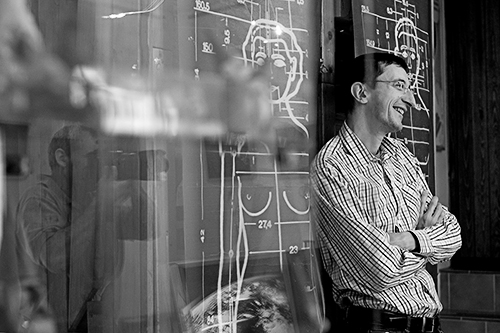 Nicolò Quirico - Nicolò Quirico has worked on visual communication and publishing since 1985, the year in which he graduated from the Istituto Statale d’Arte di Monza. From 1996 to 2004 he was responsible for organising the Morlotti-Imbersago award and thus began his artistic research, starting from the use of photography to create conceptual matrix installations. Creating refined encounters between imagination and memory, between history and fantasy, such as the itinerant exhibition dedicated to the river Adda and the Bestiario dell’ora blu. In 2009 he won the second edition of the national award Fotografare il Territorio, organised by the Fondazione Vittorio and Piero Alinari of Florence. Among his most recent exhibitions: the exposition Premio Confini 10, London Calling at the Costantini Art Gallery in Milan and the project ParisPhoto presented at the MIA - Milan Image Art Fair 2015.
Nicolò Quirico - Nicolò Quirico has worked on visual communication and publishing since 1985, the year in which he graduated from the Istituto Statale d’Arte di Monza. From 1996 to 2004 he was responsible for organising the Morlotti-Imbersago award and thus began his artistic research, starting from the use of photography to create conceptual matrix installations. Creating refined encounters between imagination and memory, between history and fantasy, such as the itinerant exhibition dedicated to the river Adda and the Bestiario dell’ora blu. In 2009 he won the second edition of the national award Fotografare il Territorio, organised by the Fondazione Vittorio and Piero Alinari of Florence. Among his most recent exhibitions: the exposition Premio Confini 10, London Calling at the Costantini Art Gallery in Milan and the project ParisPhoto presented at the MIA - Milan Image Art Fair 2015.
web site

 home
cover ▼
opinions
news ▼
portfolio
post.it
post.cast
video
ongoing
thematicpaths
googlecards
FPtag
home
cover ▼
opinions
news ▼
portfolio
post.it
post.cast
video
ongoing
thematicpaths
googlecards
FPtag

